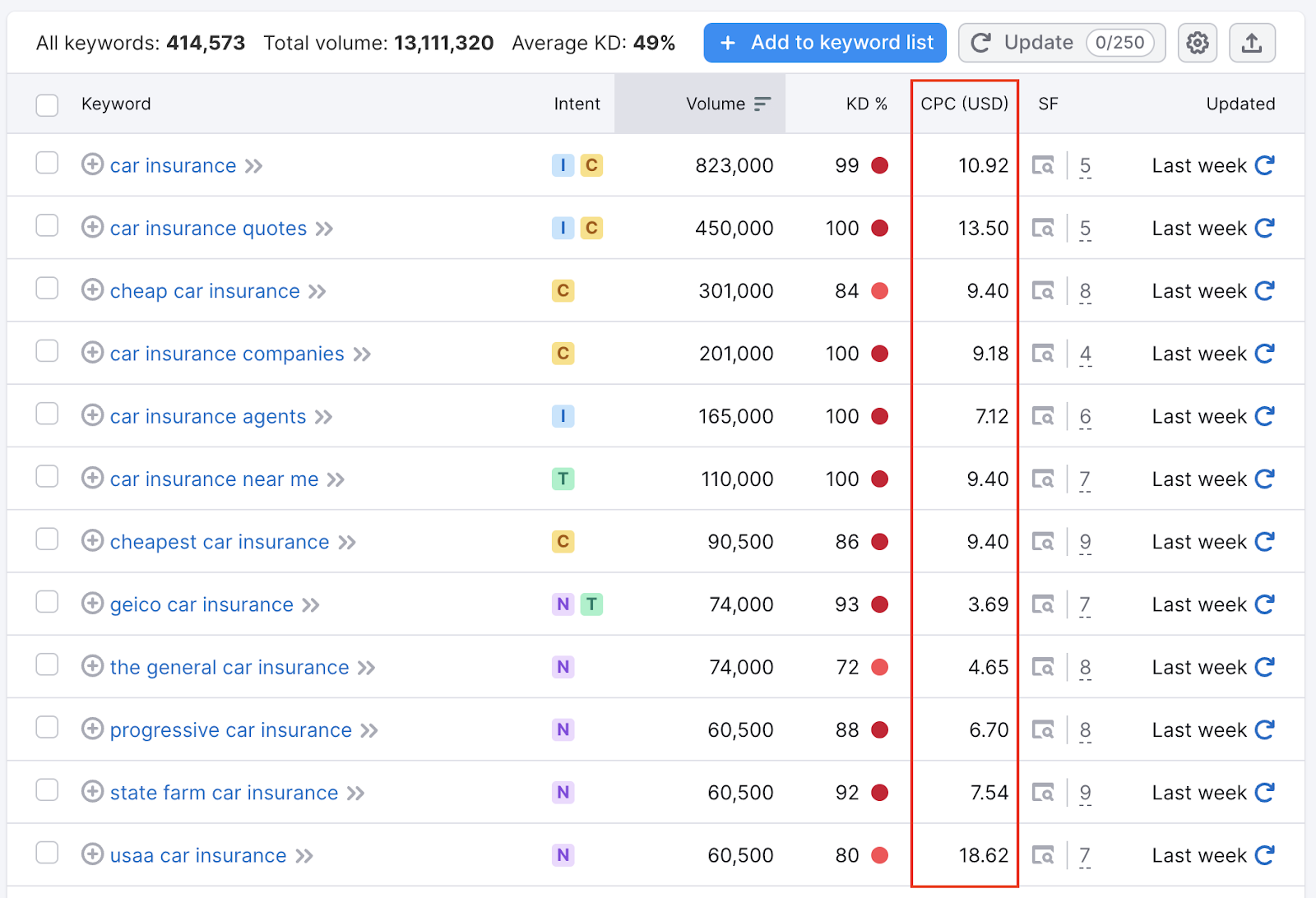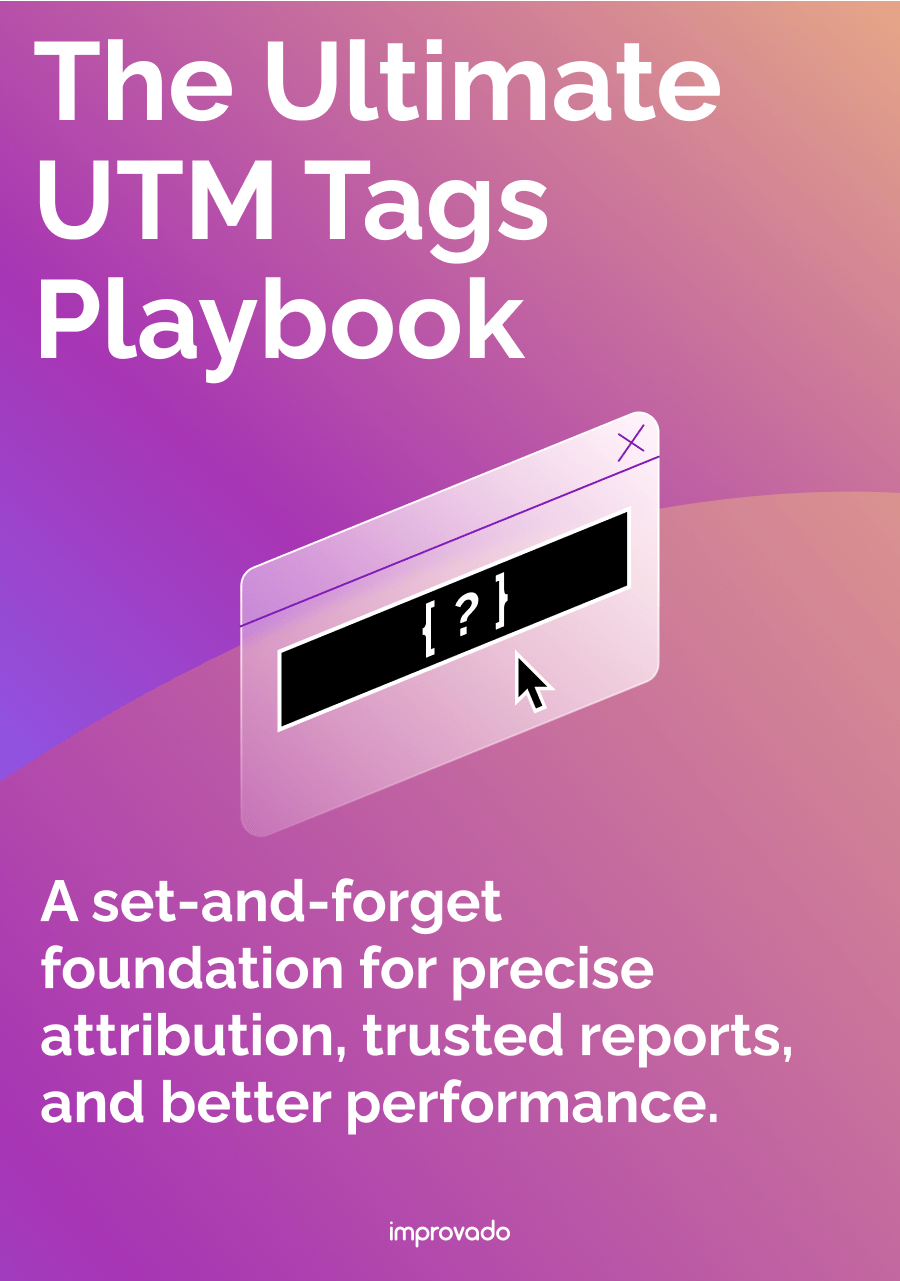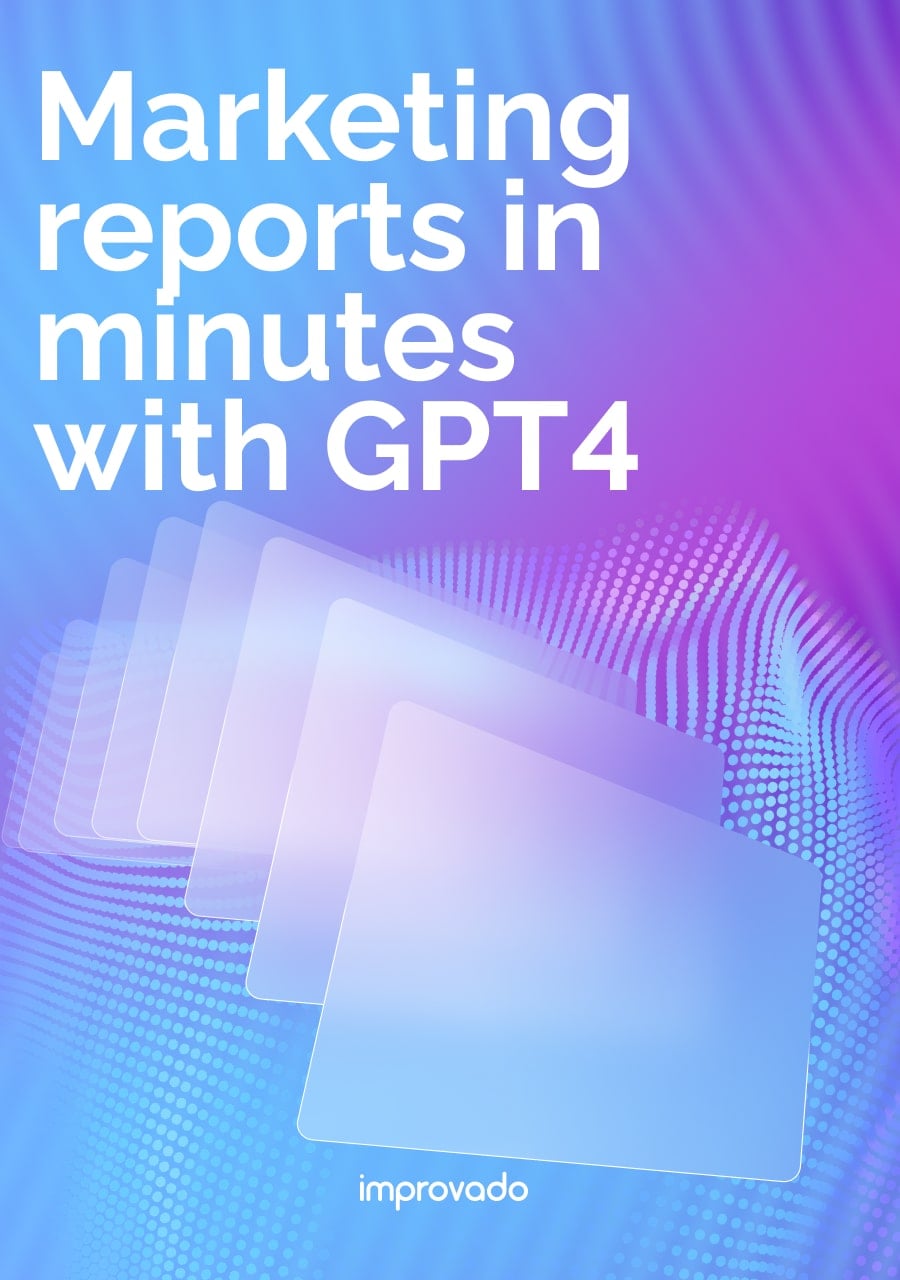PPC budget allocation matters more than ever. Costs keep climbing across most industries, and forecasts show another 15–30% increase going into 2026 as economic pressures grow and AI overviews reduce the number of clickable impressions. With higher prices and less available traffic, ROAS drops fast unless budgets are actively shifted toward the campaigns that can still deliver strong returns.
This article explains how to approach PPC budget allocation in a clear, practical way. You’ll learn how to judge channel efficiency, find the campaigns that truly drive results, and use tools like portfolio bidding, shared budgets, and real-time pacing to keep performance steady as conditions change.
Key Takeaways:
- A PPC budget is more than ad spend. It's a strategic plan that must account for management fees, tools, and creative costs to be realistic.
- There is no single "best" way to calculate a PPC budget. Use models based on goals (CPA/ROAS), revenue percentage, or market share to find the right fit.
- Smart budget allocation relies on unified data. Integrating metrics from all ad platforms is essential for identifying wasted spend and optimizing for performance.
- A successful PPC budget is carefully allocated. Distribute funds strategically across channels (Google, Meta), funnel stages (TOFU/BOFU), and keyword types (branded/non-branded).
- A PPC budget is not static. It requires constant monitoring, pacing, and adjustment based on real-time performance data to maximize marketing ROI.
What Is a PPC Budget?
A PPC budget is the total amount of money a business decides to spend on its pay-per-click advertising campaigns over a specific period. This period is typically a month or a quarter.
While most people think of this budget as just the money paid to ad platforms like Google or Facebook for clicks, a truly comprehensive PPC budget accounts for much more. Neglecting these other costs leads to inaccurate ROI calculations and unrealistic performance expectations.
Core Components: Bids, Clicks, and Impressions
The most visible part of your PPC budget is the direct ad spend. This is the money paid to platforms for user interactions with your ads. This includes:
- Cost-Per-Click (CPC): You pay each time a user clicks on your ad. This is the most common model for search engine advertising.
- Cost-Per-Mille (CPM): You pay for every one thousand impressions (views) of your ad. This model is often used for brand awareness campaigns on display and social media networks.
- Cost-Per-Acquisition (CPA): You pay only when a specific action, like a form submission or a sale, is completed. This is a conversion-focused bidding strategy.
Hidden Costs: Management Fees, Tools, and Creative
True PPC budget management accounts for all associated expenses. Overlooking these hidden costs can drastically skew your performance metrics. Be sure to include:
- Management fees: If you work with a PPC agency or a freelancer, their fees are a significant part of your budget. This can be a flat monthly retainer, a percentage of ad spend, or a performance-based fee.
- PPC software and tools: Effective campaigns rely on specialized tools for keyword research, competitive analysis, bid management, and reporting. Subscriptions for platforms like Semrush, Ahrefs, or advanced bidding tools should be included.
- Creative development: This includes the cost of designing display ads, producing video content, and writing compelling ad copy. High-quality creative is essential for engagement and conversions.
- Landing page optimization: Creating and testing dedicated landing pages requires resources. This could involve developers, designers, or subscription costs for platforms like Unbounce or Instapage.
How to Calculate Your PPC Budget: 5 Proven Models
There's no magic PPC budget calculator that works for every business. The right approach depends on your industry, business maturity, and specific goals. You can choose or combine different approaches to create a budget that makes sense for you.
Here are five effective models for determining your PPC budget.
Model 1: The Goal-Oriented Formula (Based on CPA/ROAS)
This is the most strategic method. It works backward from your desired business outcome. You start with your revenue or lead goals and use your conversion data to calculate the required ad spend. This model directly connects your PPC budget to tangible results.
The formula for leads:
PPC Budget = (Target # of Leads / Lead-to-Customer Rate) / Website Conversion Rate * Average CPC
Example: You want 10 new customers this month. Your sales team closes 25% of leads. Your website landing page converts visitors into leads at a 5% rate. Your average CPC is $3.00.
PPC Budget = (10 / 0.25) / 0.05 * $3.00 = 40 leads needed / 0.05 * $3.00 = 800 clicks needed * $3.00 = $2,400
Model 2: The Percentage of Revenue Method
This is a common and straightforward approach, especially for established businesses with predictable revenue streams.
You simply allocate a fixed percentage of your total company revenue (or marketing revenue) to your PPC budget. This percentage can vary widely by industry. Competitive B2B sectors might spend 10-15%, while some B2C companies might allocate 5-8%.
This method ensures your ad spend scales with business growth. However, it can be limiting for new businesses trying to establish a market presence, as their revenue base is small.
Model 3: The Market Share Approach
This aggressive strategy is for businesses aiming to capture a specific share of the search market. It involves using competitive analysis tools to estimate your competitors' PPC budgets and traffic. You then set a budget designed to achieve a target "impression share" on key search terms.
For example, if you want to be visible for 30% of all searches for your main keyword, you budget to match that goal.
This approach is often expensive and best suited for well-funded companies in a growth phase.
Model 4: The Flat-Rate "What You Can Afford" Method
Many small businesses start here. They determine a fixed amount they can comfortably spend on advertising each month without jeopardizing finances.
While this method is safe and simple, it's not strategic. It disconnects spending from goals and potential opportunities.
A business might be able to afford $5,000/month, but that amount may not be enough to generate meaningful results in a competitive market. It's a starting point, but businesses should aim to evolve to a more goal-oriented model as soon as they have performance data.
Model 5: The Data-Driven Forecasting Model
This is the most advanced approach. It leverages historical performance data and statistical modeling to forecast future outcomes at different budget levels. This requires a significant amount of clean, centralized data.
A platform like Improvado is essential here because it centralizes all your marketing and revenue data in one place, normalizes it, and preserves the historical depth needed for accurate modeling. You can then analyze trends in CPC, conversion rates, and seasonality to build a predictive model that shows how an increased PPC budget might impact lead volume or revenue.
Setting Your Initial PPC Budget: A Step-by-Step Guide
Calculating your budget is one piece of the puzzle. The next is to set it up for success. This step-by-step process helps you build a foundational PPC budget, even if you're starting from scratch. It ensures your budget is grounded in clear objectives and market realities.
Step 1: Define Crystal-Clear Business Objectives
Before you spend a single dollar, you must know what you want to achieve. Vague goals like "get more traffic" are not helpful. Your objectives must be specific, measurable, achievable, relevant, and time-bound (SMART).
Examples include:
- Generate 50 qualified B2B leads through LinkedIn Ads in Q4.
- Achieve a 5:1 Return on Ad Spend (ROAS) for our e-commerce Google Shopping campaigns this month.
- Increase brand name searches by 20% over the next six months through YouTube and Display ads.
Your objective dictates your strategy. A lead generation goal will focus spend on high-intent search keywords. A brand awareness goal will prioritize CPM-based buys on social media and display networks.
Step 2: Conduct In-Depth Keyword Research to Estimate CPCs
Your cost-per-click is a critical variable in any budget calculation. Use tools like Google Keyword Planner, Ahrefs, or Semrush to research relevant keywords for your business.

These tools provide estimated CPC ranges. Pay attention to commercial intent keywords (e.g., "emergency plumber near me") as they are more valuable and more expensive than informational keywords (e.g., "how to fix a leaky faucet"). This research provides a realistic baseline for your spending projections.
Step 3: Analyze Your Sales Funnel and Conversion Rates
You need to know your numbers.
- What percentage of website visitors fill out a form?
- What percentage of those leads turn into customers?
- What is the average lifetime value (LTV) of a customer?
Knowing these metrics is crucial for the goal-oriented budgeting model. If you don't have this data, your first PPC campaign objective should be to establish these benchmarks. Without them, you're flying blind.
A solid marketing analytics setup is essential for tracking these metrics accurately across the entire customer journey. Improvado supports this by unifying paid media, website, and CRM data into one consistent structure, making it easy to measure how prospects move through each stage of the funnel.
With all metrics aligned, you can establish reliable benchmarks for form fills, qualification rates, sales velocity, and LTV – numbers that directly inform a goal-oriented budgeting model.
With Improvado, you can:
- Combine paid media, web analytics, and CRM data in one place.
- Apply standardized metrics and naming conventions for clean reporting.
- Track conversions and assisted conversions across channels.
- Analyze funnel performance from first touch to closed-won.
- Calculate LTV, CAC, ROAS, and marginal return using consistent data.
- Build dashboards and reports that update automatically.
This creates the analytical foundation needed to set accurate targets and allocate PPC budgets with clarity.
Step 4: Factor in Industry Benchmarks and Seasonality
If you are new to PPC, industry benchmarks can provide a helpful starting point.
Research average CPCs and conversion rates for your specific industry. Be aware that these are just averages. Your own performance may vary.
Also, consider seasonality. A retailer will need a much larger PPC budget in Q4 for the holidays. A B2B software company might see a dip in performance during the summer months. Adjust your budget to align with these predictable market trends.
Step 5: Allocate a Separate Budget for Testing (10-20%)
Never allocate 100% of your budget to what you think will work. Always reserve a portion, typically 10-20%, for experimentation. This testing budget is your key to long-term improvement.
Use it to:
- Test new ad platforms or channels.
- Experiment with different ad copy and creative.
- Bid on new sets of keywords.
- Test different landing page designs.
This dedicated fund for optimization ensures you are always learning and improving the efficiency of your main PPC budget.
Advanced PPC Budget Allocation Strategies
Once you have a total PPC budget, the next challenge is deciding how to spend it. Smart allocation can make a $5,000 budget outperform a poorly managed $10,000 budget. This requires thinking strategically about where each dollar goes. Your goal is to distribute funds to the areas that will drive the best results against your specific objectives.
Allocating Across Channels: Google, Meta, LinkedIn, and More
Don't put all your eggs in one basket. Diversifying your PPC budget across multiple channels helps you reach different audiences at various stages of their journey. A typical allocation might look like:
- Google Search Ads (40-60%): The workhorse for capturing high-intent demand. Allocate the largest share here if your primary goal is lead generation or direct sales.
- Social Media Ads (Meta, LinkedIn) (20-35%): Excellent for building awareness, targeting specific demographics, and remarketing. LinkedIn is crucial for B2B, while Meta (Facebook/Instagram) excels for B2C.
- Display & Video Ads (10-20%): Best for top-of-funnel brand awareness and remarketing. Use platforms like the Google Display Network and YouTube.
- Other Channels (5-10%): Includes platforms like Bing Ads, Amazon Ads (for e-commerce), or TikTok, depending on your audience.
This is just a starting point. The key is to monitor performance closely. Reallocate budget from underperforming channels to those delivering a higher ROI.
Budgeting by Campaign Hierarchy: Product, Geo, Intent
Within a single platform like Google Ads, you must further segment your budget. A logical campaign hierarchy allows for granular control. You can allocate your PPC budget based on:
- Product/service lines: Give more budget to your most profitable products or services.
- Geographic location: Allocate more spend to high-performing regions, cities, or countries.
- Match type: Assign more budget to high-intent exact match keywords and less to broader, research-focused broad match keywords.
- Device type: If mobile converts better for your business, allocate a larger share of the budget to mobile users.
The Funnel-Based Approach: TOFU, MOFU, BOFU Budgets
A sophisticated strategy is to allocate your PPC budget based on the marketing funnel. This ensures you are engaging users at every stage of their journey.
- Top-of-Funnel (TOFU - 10-20%): Focus on awareness. Use display ads, social media video views, and informational content to reach a broad audience that doesn't know you yet.
- Middle-of-Funnel (MOFU - 30-40%): Target consideration. Use remarketing, in-market audiences, and non-branded search keywords to engage users who are researching solutions.
- Bottom-of-Funnel (BOFU - 40-60%): Drive conversions. This is where you spend the most. Focus on high-intent search keywords, remarketing to cart abandoners, and branded search terms.
Branded vs. Non-Branded Keyword Budget Split
It's crucial to have a dedicated budget for searches on your own brand name. While some argue this is paying for traffic you'd get anyway, bidding on your brand protects you from competitors who might bid on your name.
A common split is allocating 10-15% of your search budget to branded campaigns and 85-90% to non-branded campaigns that drive new customer acquisition.
PPC Budget Management: Daily, Weekly, and Monthly Optimization
Setting a PPC budget is not a one-time task. It requires active management to ensure you are spending efficiently and effectively.
PPC analytics and management involves understanding how ad platforms use your budget, pacing your spend correctly, and knowing when to make adjustments based on performance data.
Understanding Daily vs. Monthly Budgets in Ad Platforms
Most ad platforms, like Google Ads and Meta Ads, operate on a daily budget. You tell the platform how much you want to spend per day, on average.
However, the platform may spend up to double your daily budget on any given day to capitalize on traffic fluctuations. It will not, however, exceed your average daily budget multiplied by the number of days in the month.
Understanding this is key to avoiding surprises. Your "monthly budget" is a planning figure; your "daily budget" is the primary lever you control within the ad platform.
Pacing Your Spend to Avoid Early Depletion
A common mistake is letting your campaigns run out of budget early in the day or month. This means you miss out on valuable traffic in the afternoon or at the end of the month.
Budget pacing involves monitoring your spend daily and weekly. If you have a $3,000 monthly budget, you should be spending around $100 per day. If you notice you're spending $150 per day in the first week, you may need to lower your daily budgets to ensure you have funds left for the entire month.
Tools and scripts can help automate this process. Regular checks are vital, especially during seasonal peaks or promotional periods when search volume can spike unexpectedly.
When and How Often to Adjust Your Budgets
Budget adjustments should be data-driven, not reactionary. Avoid making drastic changes based on one bad day. A good cadence for adjustments is:
- Weekly review: Check your overall budget pacing and the performance of your top campaigns. Make minor adjustments to shift spend from underperforming areas to high-performing ones.
- Monthly review: Conduct a deep dive into performance. Did you hit your goals? What was your ROAS? Use these insights to set the budget for the following month.
- Quarterly strategy: Re-evaluate your high-level strategy. Are your overall business goals changing? Is it time to test a new channel or launch a major new campaign?
The key is to give your campaigns enough time to gather data before making significant changes. You can get a much clearer picture of performance with comprehensive marketing dashboard examples that show trends over time.
Using Automated Bidding Strategies to Manage Spend
Modern ad platforms offer powerful automated bidding strategies. These use machine learning to optimize your bids in real-time to achieve a specific goal. Strategies like Target CPA (tCPA) or Target ROAS (tROAS) can be highly effective at managing your budget.
When you use these strategies, you are telling the platform to spend your budget as efficiently as possible to hit your performance targets. This can take some of the manual work out of budget management, but it still requires human oversight to set the right targets and monitor overall performance.
Leveraging Data for Smarter Budgeting
Your PPC budget decisions should be based on a complete and accurate picture of performance. However, this is often easier said than done. Data is scattered across countless platforms, making a holistic view nearly impossible to achieve manually.
The Challenge of Siloed Data from Multiple Ad Platforms
Think about your marketing stack. You have performance data in Google Ads, campaign metrics in Facebook Ads, lead data in your CRM like Salesforce, and web behavior in Google Analytics. Each platform has its own dashboard and its own way of measuring success. T
rying to manually combine this data in spreadsheets is time-consuming, prone to errors, and can never provide a real-time view. This leads to budget decisions based on incomplete or outdated information, which is a recipe for wasted spend.
Creating a Unified View with Cross-Channel Marketing Analytics
This is where a platform like Improvado becomes a game-changer.
Improvado automates the process of data collection. It integrates with over 500 marketing sources, pulling all your performance and cost data into a single, unified repository. This provides one source of truth for your marketing efforts.
With a complete view, you can finally answer critical budget questions:
- What is my true, blended CPA across all my paid channels?
- Which channel is providing the most valuable customers, not just the cheapest leads?
- How does ad spend on one platform (like Facebook) influence conversions on another (like Google)?
This level of insight is impossible with siloed data. It allows you to shift your PPC budget with surgical precision to the exact campaigns and channels that are driving real business growth. Proper attribution models are key to understanding these complex interactions.
Balancing SEO and PPC Budgets for Maximum Growth
For many businesses, digital marketing success hinges on the powerful combination of PPC and Search Engine Optimization (SEO). While they are different disciplines, they work best together.
Allocating budget between SEO and PPC can be a challenge. PPC offers immediate visibility and results, while SEO builds a long-term, sustainable asset. Finding the right balance is key to dominating the search engine results page (SERP).
Understanding the Synergy Between Paid and Organic
PPC and SEO are not competitors for your budget; they are partners. The data from your PPC campaigns can provide invaluable insights for your SEO strategy.
For example, you can use PPC to test the conversion rates of different keywords before investing months of effort to rank for them organically.
Running both simultaneously also increases your total SERP real estate, pushing competitors further down the page and increasing overall click-through rates. A user who sees your brand in both the paid and organic results is more likely to trust and click on your listing.
When to Lean Heavily on PPC
There are specific scenarios where a larger allocation to your PPC budget makes strategic sense:
- New business or website launch: SEO takes time. PPC can drive traffic and generate data from day one.
- Promotions or time-sensitive offers: When you need to get the word out quickly about a sale or event, PPC is the ideal channel.
- Highly competitive keywords: For some commercial terms, cracking the first page of organic results can take years. PPC gives you immediate access.
- Testing and data gathering: As mentioned, PPC is the perfect laboratory for testing messaging, landing pages, and keyword value.
When to Invest More in SEO
As your business matures, shifting a larger portion of your budget toward SEO becomes a smart long-term investment:
- Building brand authority: Consistent, high-quality content builds trust and authority that paid ads cannot.
- Sustainable, long-term traffic: A top organic ranking can deliver "free" traffic for years, offering an incredible long-term ROI.
- Targeting informational keywords: SEO is ideal for capturing users at the top of the funnel who are looking for information, not yet ready to buy.
A Framework for Allocating Your Digital Marketing Budget
A balanced approach often works best. For a new business, a 70% PPC and 30% SEO split might be appropriate to generate initial momentum.
After a year, as organic rankings begin to build, this might shift to a 50/50 split.
A mature business with strong organic authority might move to a 30% PPC and 70% SEO split, using PPC for highly targeted, bottom-of-funnel campaigns.
The key is to be flexible and adjust your allocation based on performance and business goals.
Common PPC Budgeting Mistakes (And How to Avoid Them)
Even with a solid plan, it's easy to fall into common traps that lead to a wasted PPC budget. Being aware of these pitfalls is the first step to avoiding them. Here are five of the most frequent PPC budget management mistakes and how to steer clear of them.
Mistake #1: Setting and Forgetting Your Budget
The most common error is treating your PPC budget as a static, one-time decision. The digital marketplace is dynamic. CPCs fluctuate, competitor strategies change, and consumer behavior shifts. A budget that was effective last quarter may be inefficient today.
How to avoid it: Implement a regular review cadence (weekly and monthly) to analyze performance and reallocate funds. Active management is not optional.
Mistake #2: Ignoring Negative Keywords and Wasting Spend
Every click on an irrelevant search term is wasted money. If you sell "men's leather shoes," you don't want to pay for clicks from people searching for "shoe repair" or "free shoe images." Failing to build a robust negative keyword list is like leaving a hole in your wallet.
How to avoid it: Regularly review your search term reports in Google Ads. Identify irrelevant queries that are triggering your ads and add them as negative keywords. This simple task can immediately improve your ROI.
Mistake #3: Spreading Your Budget Too Thin Across Channels
It can be tempting to try to be on every new platform. However, a small budget divided among five channels will likely fail on all five. Each platform requires a minimum level of investment to gather enough data for optimization. A $1,000 budget is better spent mastering one channel than being invisible on five.
How to avoid it: Start with the one or two channels most likely to reach your target audience. Prove that you can get a positive ROI there before expanding your PPC budget to new platforms.
Mistake #4: Not Scaling Budgets for Winning Campaigns
Marketers often have a fear of increasing the budget, even on a campaign that is performing exceptionally well. They worry that increasing the spend will decrease the efficiency. While this can happen, being too cautious means leaving money on the table. If a campaign is delivering a 7:1 ROAS, you should be giving it as much budget as you can.
How to avoid it: When a campaign consistently hits its targets, incrementally increase its budget by 15-20%. Monitor the performance closely. Continue to scale as long as the campaign remains profitable.
Mistake #5: Failing to Account for Management and Tool Costs
As discussed earlier, your true cost of PPC is not just your ad spend. Forgetting to factor in agency fees, software subscriptions, and creative costs leads to a wildly inaccurate picture of your profitability. A campaign might look great on an ad spend vs. revenue basis, but could actually be losing money when all costs are considered.
How to avoid it: Create a comprehensive marketing budget that includes a line item for every single associated cost. Calculate your ROI based on this total investment, not just ad spend. A well-structured data integration strategy can help pull cost data from various sources for accurate reporting.
Conclusion
PPC is getting more expensive, and budgets no longer go as far as they used to. Rising costs and shifting impression availability require constant oversight and a data-driven approach to decide where every dollar should go. The only way to protect ROAS in this environment is to monitor performance continuously and reallocate spend based on real results, not assumptions.
Improvado gives you the data foundation to do this with confidence. It unifies paid media, web analytics, and CRM data, standardizes every metric, and provides a complete view of performance across channels and the full funnel. With accurate, connected data and real-time performance monitoring and alerting, you can see what works, adjust budgets quickly, and keep your PPC program efficient even as costs rise.
If you want to see how Improvado works in practice, request a demo.
.png)





.png)
